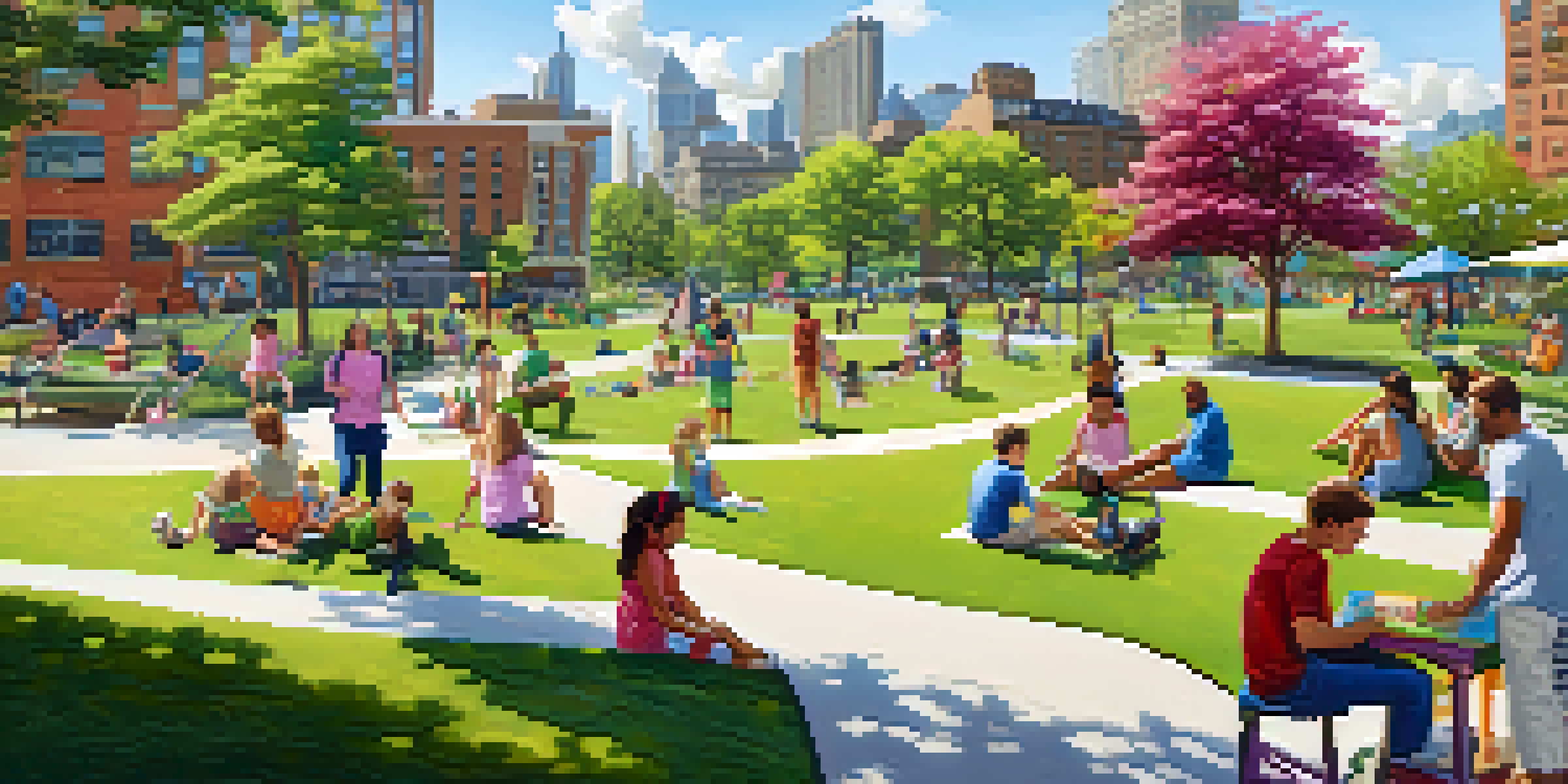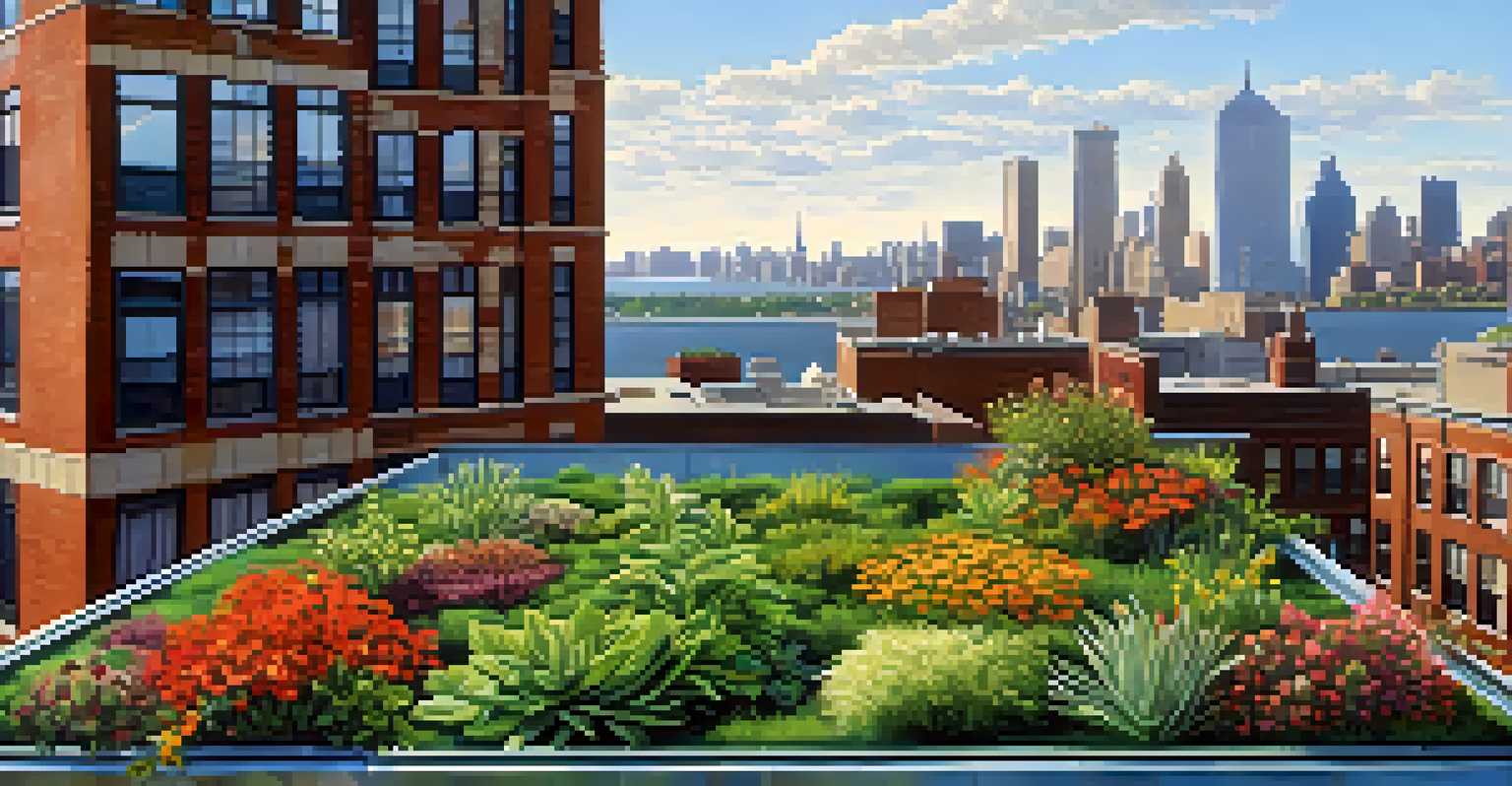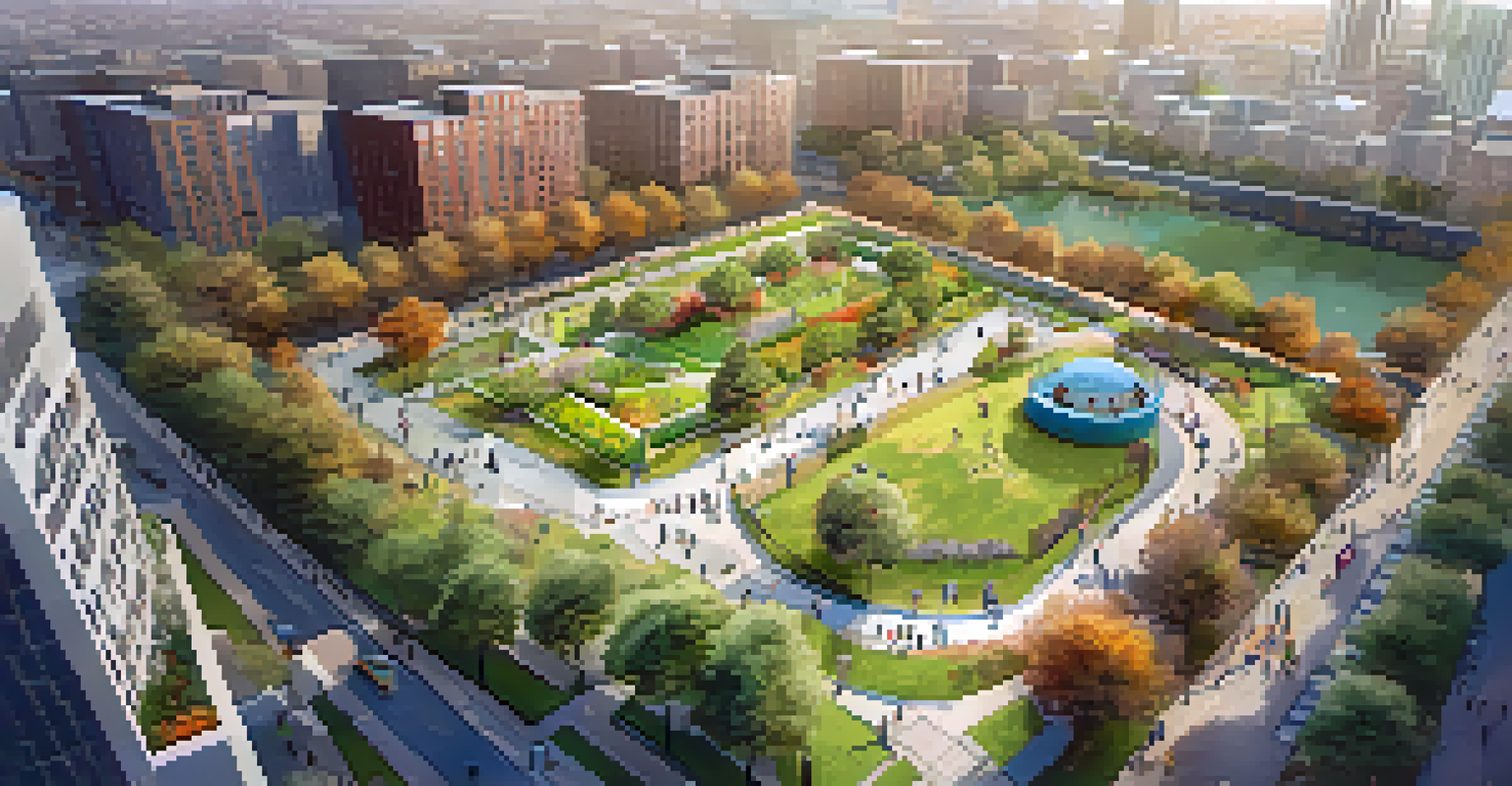The Role of Green Spaces in Mitigating Urban Heat in Jersey City

Understanding Urban Heat Island Effect in Jersey City
Urban heat islands (UHIs) occur when cities become significantly warmer than their rural surroundings. This phenomenon is primarily caused by human activities, such as increased concrete and asphalt surfaces that absorb heat. In Jersey City, the dense urban landscape exacerbates this effect, leading to higher temperatures that can impact residents' health and comfort.
The best way to predict the future is to create it.
As temperatures rise, the demand for energy increases, especially for air conditioning, which can strain local power grids. This not only leads to higher utility bills for residents but can also contribute to increased greenhouse gas emissions. Understanding UHIs is crucial for developing strategies to mitigate their effects, particularly through the enhancement of green spaces.
Fortunately, green spaces, such as parks and community gardens, play a pivotal role in cooling urban environments. By absorbing sunlight and releasing moisture through a process called evapotranspiration, these natural areas can significantly lower temperatures in their vicinity.
Benefits of Green Spaces on Urban Temperatures
Green spaces contribute to cooling in urban areas by providing shade and releasing moisture into the air. During hot summer months, shaded areas can be up to 20 degrees cooler than surrounding paved surfaces. This cooling effect is essential for making outdoor spaces more enjoyable for residents and encouraging community interaction.

Moreover, the presence of trees and vegetation can improve air quality by filtering pollutants and producing oxygen. This dual benefit not only helps mitigate heat but also promotes healthier living conditions for Jersey City residents. Cleaner air can lead to fewer respiratory issues and a higher quality of life.
Urban Heat Islands Impact Jersey City
Jersey City's urban landscape exacerbates heat, affecting residents' health and increasing energy demands.
In addition to these environmental advantages, green spaces can also enhance property values. Homes near parks and gardens often sell for higher prices, as potential buyers recognize the intrinsic value of living in a greener, cooler environment.
Community Engagement Through Urban Green Spaces
Green spaces foster community engagement by providing areas for social interaction and recreational activities. Parks serve as gathering spots for families, friends, and neighbors, strengthening the social fabric of Jersey City. Events like farmers' markets, outdoor concerts, and fitness classes can transform these areas into vibrant community hubs.
Nature does not hurry, yet everything is accomplished.
Moreover, involving residents in the creation and maintenance of green spaces can enhance their investment in these areas. Community gardens, for instance, not only produce fresh food but also encourage collaboration and connection among neighbors. This sense of ownership can lead to greater care and preservation of these vital spaces.
Additionally, educational programs centered around green spaces can promote awareness of environmental issues and sustainable practices. By teaching residents about the importance of biodiversity and conservation, we can cultivate a community that is more attuned to its environmental responsibilities.
Jersey City's Current Green Initiatives
Jersey City has made significant strides in developing green initiatives to combat urban heat. The city's commitment to expanding parks and green spaces is evident through projects like the Berry Lane Park and the revitalization of Liberty State Park. These efforts not only enhance the aesthetic appeal of the city but also provide much-needed relief from heat.
Furthermore, the city is investing in planting more trees, which are essential for reducing heat and improving air quality. Tree planting initiatives aim to increase the urban canopy cover, creating a cooler microclimate and providing habitats for local wildlife. These initiatives align with Jersey City’s broader sustainability goals.
Green Spaces Cool and Benefit Health
Parks and greenery significantly lower urban temperatures, improve air quality, and enhance community well-being.
Community involvement in these initiatives is crucial, as local residents are often the best advocates for green space development. By participating in tree planting days or park clean-ups, citizens can contribute to the city's green vision, ensuring that these spaces thrive for future generations.
The Role of Green Roofs and Walls
In addition to traditional parks, green roofs and walls have emerged as innovative solutions to combat urban heat. These structures are designed to support plant life, effectively insulating buildings while reducing heat absorption. In Jersey City, integrating green roofs into commercial and residential buildings can help lower indoor temperatures and decrease reliance on air conditioning.
Green roofs also provide additional benefits, including stormwater management. By absorbing rainwater, they reduce runoff, which can alleviate flooding issues during heavy rains. This sustainable approach not only mitigates heat but also addresses other urban challenges faced by cities like Jersey City.
Moreover, green walls can transform blank building facades into vibrant green displays, enhancing the visual appeal of the urban landscape. These living walls not only contribute to cooling but also promote biodiversity by attracting pollinators and other wildlife to urban areas.
Challenges in Expanding Green Spaces
While the benefits of green spaces are clear, expanding them within urban areas like Jersey City comes with its challenges. Limited available land and competing interests often hinder the development of new parks. Additionally, funding for these projects can be a significant obstacle, making it essential for community members and local governments to collaborate to secure resources.
Another challenge is maintaining existing green spaces, as neglect can lead to deterioration and reduced public usage. Ensuring that parks are well-kept and accessible is vital for encouraging community engagement and maximizing their cooling effects. This requires ongoing investment in maintenance and programming to keep these areas vibrant.
Community Engagement Enhances Green Initiatives
Engaging residents in the development and maintenance of green spaces fosters ownership and strengthens community ties.
Lastly, addressing equity in green space distribution is crucial. Some neighborhoods may lack access to parks, leading to disparities in benefits experienced by different communities. Prioritizing green space development in underserved areas can help ensure that all residents of Jersey City enjoy the cooling and health benefits that these spaces provide.
Future Prospects for Green Spaces in Jersey City
Looking ahead, the future of green spaces in Jersey City appears promising. Ongoing city planning initiatives are increasingly recognizing the importance of integrating nature into urban environments. As climate change continues to impact cities, prioritizing green infrastructure will be vital for enhancing resilience and livability.
Community input will play a significant role in shaping future green space projects. By fostering dialogue between residents and city planners, we can ensure that new developments meet the needs of the community while addressing urban heat concerns. This collaborative approach can lead to innovative solutions tailored to Jersey City's unique challenges.

Ultimately, as green spaces continue to evolve, they will become even more integral to Jersey City's identity. By embracing these natural areas, we can create a cooler, healthier, and more connected community for all residents.